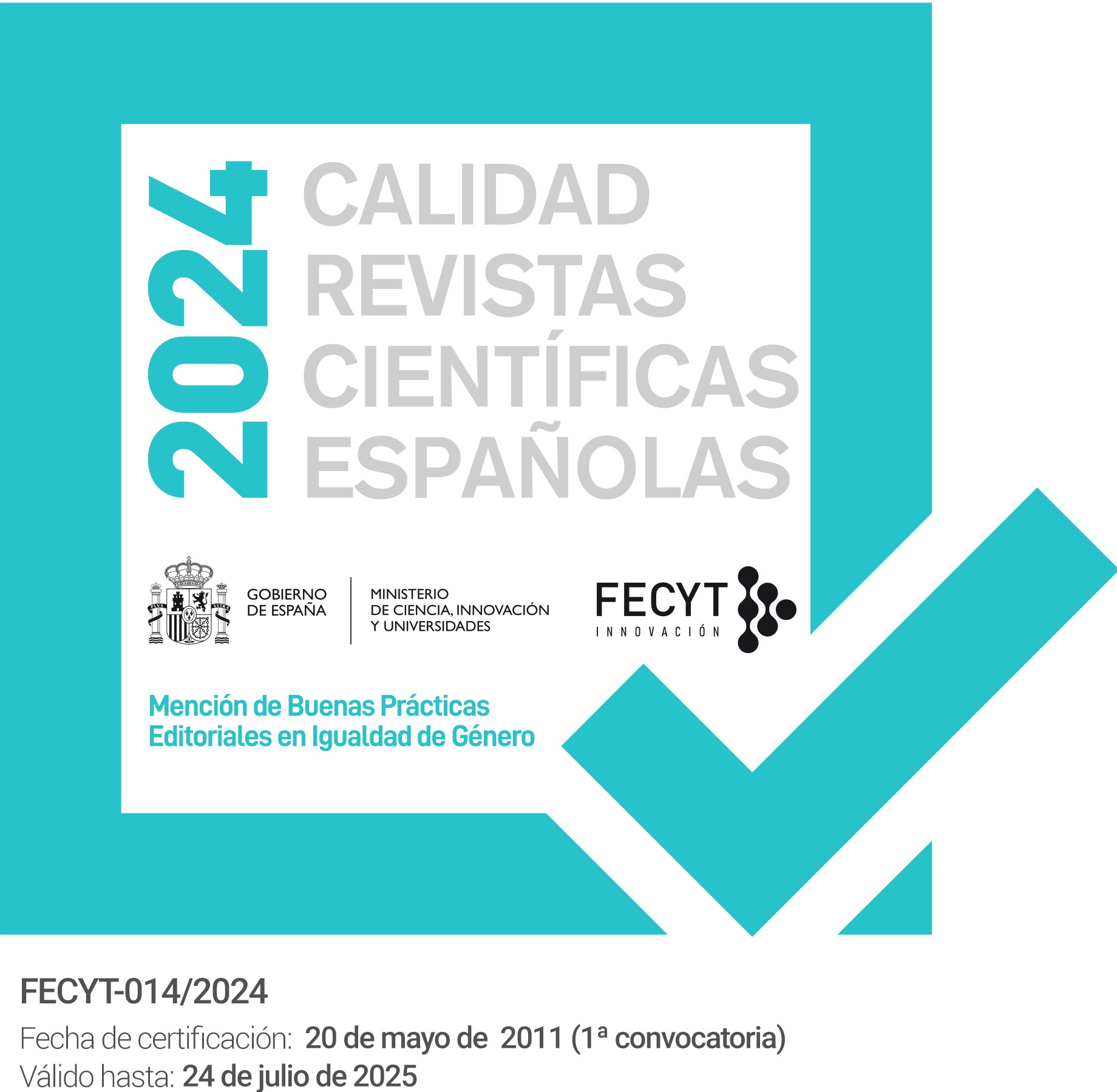Trabajadores migrantes y activismo sindical en los márgenes: los centros de trabajadores como campo organizativo
DOI:
https://doi.org/10.14422/mig.i49.y2020.002Palabras clave:
centros de trabajadores, sindicalismo comunitario, sindicatos, campo organizativo, trabajadores migrantesResumen
Los centros de trabajadores son organizaciones comunitarias que prestan servicios, intervienen políticamente a y movilizan a trabajadores de bajos salarios, principalmente migrantes, en Estados Unidos. El presente artículo analiza los centros de trabajadores como campo organizativo, prestando atención a los factores que originan tanto isomorfismo como heterogeneidad. A partir del estudio etnográfico llevado a cabo en el área metropolitana de Nueva York, se concluye que ante un contexto de segmentación del mercado de trabajo y de ausencia de implicación sindical en los mercados de trabajo secundarios, la respuesta de los trabajadores migrantes se ha concentrado en el desarrollo de formas organizativas propias que presentan como principal activo el recurso a la redes que se conforman y (re) crean para adaptarse. Asimismo, como campo organizativo, las redes entre estas organizaciones implican tanto colaboración como rivalidad. En este sentido, se identifican dos grandes modelos: uno que tiende a la institucionalización y otro que ponen énfasis en la acción directa en los lugares de trabajo.
Descargas
Citas
Avedaño, A., y Hiatt, J. (2012). Worker self-organization in the new economy: The AFL-CIO’s experience in movement building with community-labour partnerships. Labour, Capital and Society, 45(1), 66-95.
Black, S. J. (2005). Community Unionism: A Strategy for Organizing in the New Economy. New Labor Forum, 14(3), 24-32.
Blake, J. (2012). Professionalism and the third sector. Paper presented at the Annual Meeting of the ISTR 10th International Conference. BLS (2019). New York City Economic Summary. Update April 03, 2019. Washington DC: Bureau of Labor Statistics. https://www.bls.gov/regions/economic%E2%80%90summaries.htm
Bowles, S., y Gintis, H. (1975). The problem with human capital theory-A Marxian critique. American Economic Review, 65(2), 74-82.
Braun, V., & Clarke, V. (2006) Using thematic analysis in psychology. Qualitative Research in Psychology, 3, 77-101.
Connolly, H., Marino, S., y Martínez Lucio, M. (2014). Trade union renewal and the challenges of representation: Strategies towards migrant and ethnic minority workers in the Netherlands, Spain and the United Kingdom. European Journal of Industrial Relations, 20(1), 5-20.
Connolly, H., Marino, S., y Martínez Luicio, M. (2019). Immigrants and trade unions in the European context. The politics of social inclusion and labor representation. Ithaca and London: ILR Press.
DiMaggio, P. J., y Powell, W. W. (1983). The iron cage revisited: Institutional isomorphism and collective rationality in organizational fields. American Sociological Review, 48, 147-160. doi: https://doi.org/10.2307/2095101
Fielding, T. (2010). Migration in a time of crisis: A simple conceptual framework applied to East Asian migrations (Working Paper nº 63). Brighton: University of Sussex, Sussex Centre for Migration Research.
Fine, J. (2005). Community unions and the revival of the American labor movement. Politics & Society, 33(1), 153-199. doi: https://doi.org/10.1177/0032329204272553
Fine, J. (2006). Worker centers: organizing communities at the edge of the dream. Ithaca, NY: Economic Policy Institute/Cornell University Press.
Fine. J. (2011). New forms to settle old scores: updating the worker centre story in the United States. Relations Industrielles/Industrial Relations, 66, 604-27.
Fine, J., Narro, V., y Barnes, J. (2019). Understanding worker center trayectories. En J. Fine, L. Burnham, K. Griffith, M. Ji, V. Narro y S. Pitts (Eds.), No one size fits all: Worker organization, policy, and movement in a new economic Age (pp. 7-38). Campaign, IL: LERA.
Gordon, D. M. (1972). Theories of poverty and underemployment. Lexington, MA: DC Heath.
Gordon, D. M., Edwards, R., y Reich, M. (1986). Trabajo segmentado. Trabajadores divididos: La transformación histórica del trabajo en los Estados Unidos. Madrid: Ministerio de Trabajo y Seguridad Social.
Hambrick, D. C., Finkelstein, S., Cho, T. S., y Jackson, E. M. (2005). Isomorphism in reverse: Institutional theory as an explanation for recent increases in intra-industry heterogeneity and managerial discretion. Research in Organizational Behavior, 26, 307-350. doi: https://doi.org/10.1016/S0191-3085(04)26008-7
Heery, E., Williams, S., y Abbott, B. (2012). Civil society organizations and trade unions: cooperation, conflict, indifference. Work, Employment and Society, 26(1), 145-160. doi: https://doi.org/10.1177/0950017011426302
Hopkins, T., y Wallerstein, I. (1977). Patterns of development of the modern World-system. Review, 1(2), 11-145.
Jarayaman, S., y Ness, I. (2005). Introduction. En S. Jarayaman y I. Ness (Eds.), The new urban immigrant workforce. Innovative models for labor organizing (pp. 3-8). New York, London: M E Sharp.
Jenkins, S. (2002). Organizing, advocacy, and member power: A critical reflection. Working USA, 6(2), 56-89
King, R., y Black, R. (1997). Southern Europe and the new immigrations. Brighton: Sussex Academic Press.
Leiter, J. (2005). Structural isomorphism in Australian non-profit organizations. Voluntas, 16(1), 1-31. doi: https://doi.org/10.1007/s11266-005-3230-1
Lesser, G., y Batalova, J. (2017, abril 17). Inmigrantes centroamericanos en Estados Unidos. Migration Information Source. Recuperado de https:// www.migrationpolicy.org/article/inmigrantes-centroamericanos-en-losestados-unidos
Lopez, S. H. (2004). Reorganizing the Rust Belt: An inside study of the American labor movement. Berkeley: University of California Press.
Manheim, J. B. (2017). The emerging role of worker centers in union organizing. An update and a supplement. Washington, DC: US Chamber of Commerce.
Marino, S., Pennix, R., y Roosblad, J. (2015). Trade unions, immigration and immigrants in Europe revisited: Unions’ attitudes and actions under new conditions. Comparative Migration Studies, 3, 1. doi: https://doi.org/10.1007/s40878-015-0003-x
Martín Díaz, E., Melis Maynar, A., y Sanz Casas, G. (2004). Mercados de trabajo e inmigración extracomunitaria en la agricultura mediterránea. Sevilla: Junta de Andalucía, Consejería de Asuntos Sociales.
Martínez Lucio, M. (2017). Organising without knowing it? The curious case of para-organising-style campaigns in southern Europe and the case of trade union elections in Spain. Transfer, 23(1), 89-94.
Massey, D. S., y Pren, K. A. (2013). The United States war against immigration. Paradoxical effects. Doc Anal Geogr, 59(2), 209-237.
Mayring, P. (2007). On generalization in qualitatively oriented research [23 paragraphs]. Forum Qualitative Sozialforschung / Forum: Qualitative Social Research, 8(3), Art. 26, http://nbn-resolving.de/urn:nbn:de:0114-fqs0703262
McBride, J., y Greenwood, I (eds) (2009). Community Unionism: A Comparative Analysis of Concepts and Contexts. Basingstoke: Palgrave Macmillan.
Milkman, R. (2000). L.A. Story. Immigrant workers and the future of the US Labor Movement. New York: Russell Sage Foundation.
Milkman, R. (2013). Back to the Future? US Labour in the New Gilded Age. British Journal of Industrial Relations, 51(4), 645-665.
Milkman, R. (2014). Introduction: Toward a new labor movement? Organizing New York City’s precariat. En R. Milkman y E. Ott (Eds.), New Labor in New York. Precarious Workers and the Future of the Labor Movement (pp. 1-23). Ithaca and London: Cornell University Press.
MOIA. (2018). State of our immigrant city. Annual Report March 2018. Nueva York: NYC Mayor’s Office for Immigrant Affairs. https://www1.nyc.gov/assets/immigrants/downloads/pdf/moia_annual_report_2018_final.pdf
Moody, K. (2009). Immigrant workers and labour/community organisations in the United States. En J. McBride y I. Greenwood (Eds.), Community unionism. A comparative analysis of concepts and contexts (pp. 139-159). Basingstoke: Palgrave MacMillan.
Mora, C. (2014). Making Hispanics. How activists, bureaucrats and media constructed a new American. Chicago: University of Chicago Press.
Mottura, G. (1992, septiembre). Forme della presenza extracomunitaria nella agricoltura italiana: resultati di una prima esplorazione. Ponencia presentada al curso de la UIMP Trabajadores inmigrantes en la agricultura mediterránea, Valencia, España.
Murray, G. (2017). Union renewal: what can we learn from three decades of research? Transfer: European Review of Labour and Research, 23(1), 9-29. doi: https://doi.org/10.1177/1024258916681723
Ness, I. (2005). Immigrants, unions, and the new U. S. labor market. Philadelphia: Temple University Pres.
Pennix, R., y Roosblad, J. (Eds). (2001). Trade unions, immigration and immigrants in Europe, 1960-1993: A comparative study of the actions of trade unions in seven West European countries. London: Berghahn Books.
Piore, M. J. (1969.) Impact of the labor market upon the design and the selection of production techniques within the manufacturing plan. Quarterly Journal of Economics, 82(4), 602-620.
Piore, M. J. (1979). Birds of Passage: Migrant Labour and Industrial Society. Cambridge: Cambridge University Press.
Pugliese, G. (1992, septiembre). L’immigrazione in Italia: un confronto tra Nord e Sur. Ponencia presentada al curso de la UIMP Trabajadores inmigrantes en la agricultura mediterránea, Valencia, España.
Roca, B. (2006). Entre la competencia y la cooperación: la construcción de redes entre las Organizaciones No Gubernamentales de Desarrollo en Andalucía. Redes. Revista hispana para el análisis de redes sociales, 11(2). https://revistes.uab.cat/redes/article/download/v11-n2-roca/94-pdf-es
Roca, B. (2014). Conflicto y cambio en el tercer sector. Carisma, control externo y heterogeneidad en las ONGD. Papers: Revista de Sociología, 99(1), 97-118.
Roca, B. (2016). Transformaciones en el trabajo y movimiento sindical. Propuestas para una renovación necesaria. Madrid: Fundación Alternativas.
Roca, B. (2019). Analyzing Isomorphism in Nongovernmental Organizations: Ethical Dilemmas in Ethnographic Fieldwork. SAGE Research Methods Cases, 2, 1-10
Sassen, S. (2005). The Global City: Introducing a concept. Brown Journal of World Affairs, 11, 27-43.
Sassen, S. (2014). Expulsions: Brutality and complexity in the global economy. Cambridge, MA: The Belknap Press of Harvard University Press. Semuels, A. (2018, junio 27). Is This the End of Public-Sector Unions in America? The Atlantic. Recuperado de https://www.theatlantic.com/politics/archive/2018/06/janus-afscme-public-sector-unions/563879/
Silverman, D. (2009). Doing Qualitative Research. London: SAGE.
Sullivan, R. (2010). Revitalization and the role of community-based organizations organizing workers in the space between unions: Unioncentric labor. Critical Sociology, 36(6), 793-819.
Wills, J., y Simms, M. (2004). Building reciprocal community unionism in the UK. Capital and Class, 28(1), 59-84.
Descargas
Publicado
Cómo citar
Número
Sección
Licencia
Los autores de artículos aceptados en la revista Migraciones conservan los derechos de propiedad intelectual sobre sus trabajos y otorgan a la revista los permisos de distribución y comunicación pública de los mismos, consintiendo que se publiquen bajo una licencia Creative Commons NonCommercial-NoDerivatives-Attribution 4.0 International License. Se recomienda a los autores publicar su trabajo en Internet (por ejemplo en páginas institucionales o personales, repositorios, etc.) respetando las condiciones de esta licencia y citando debidamente la fuente original.







